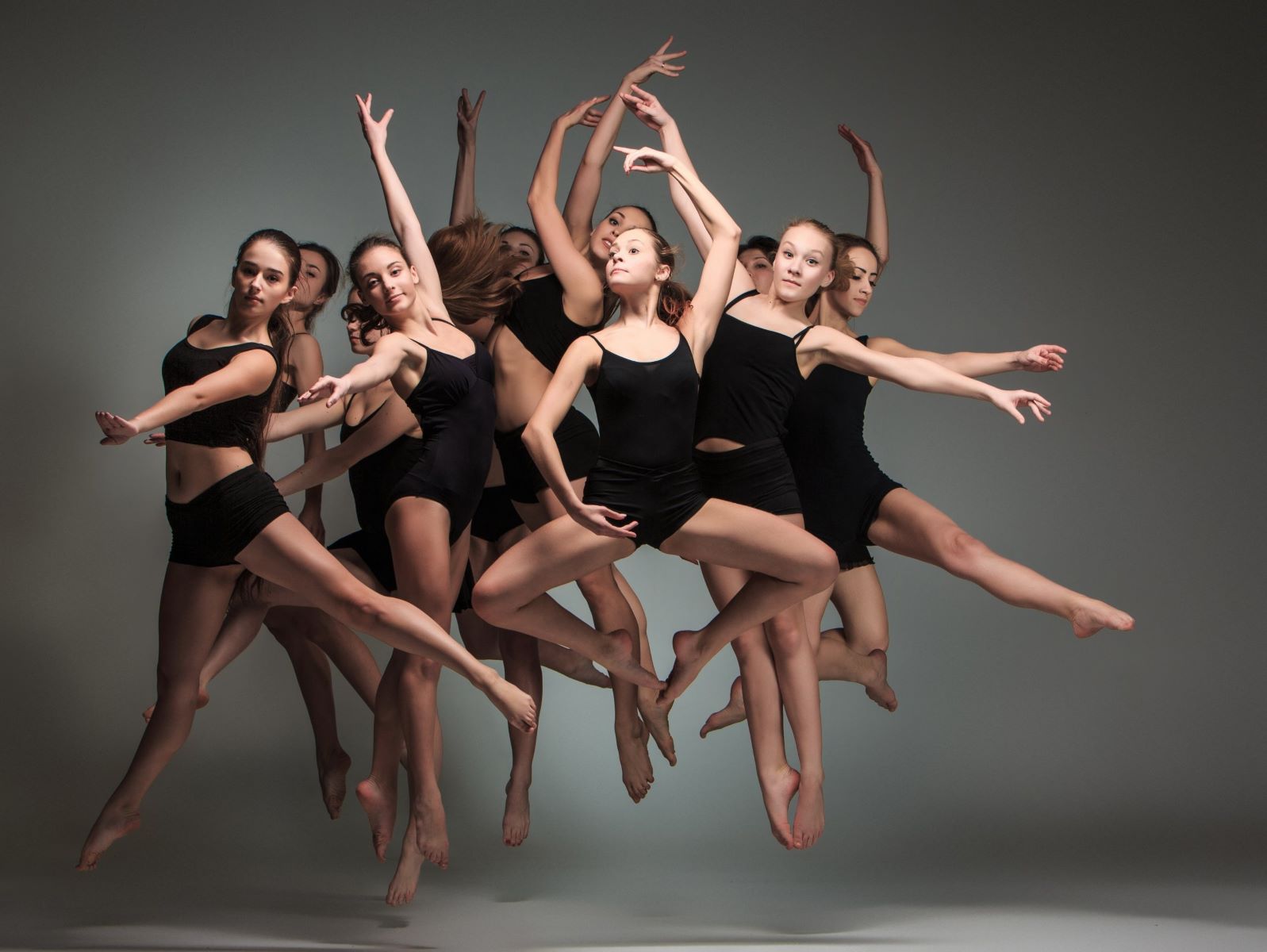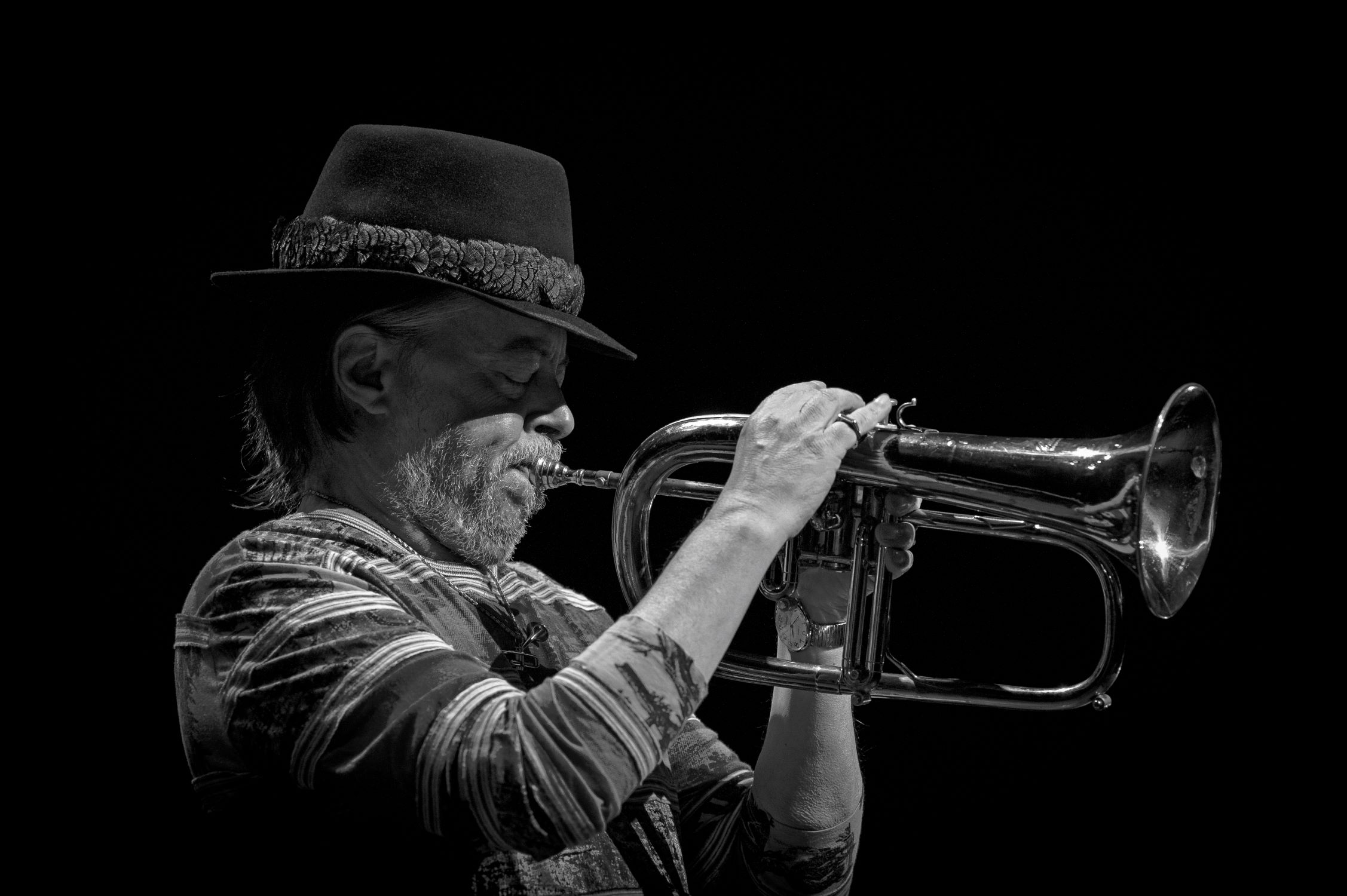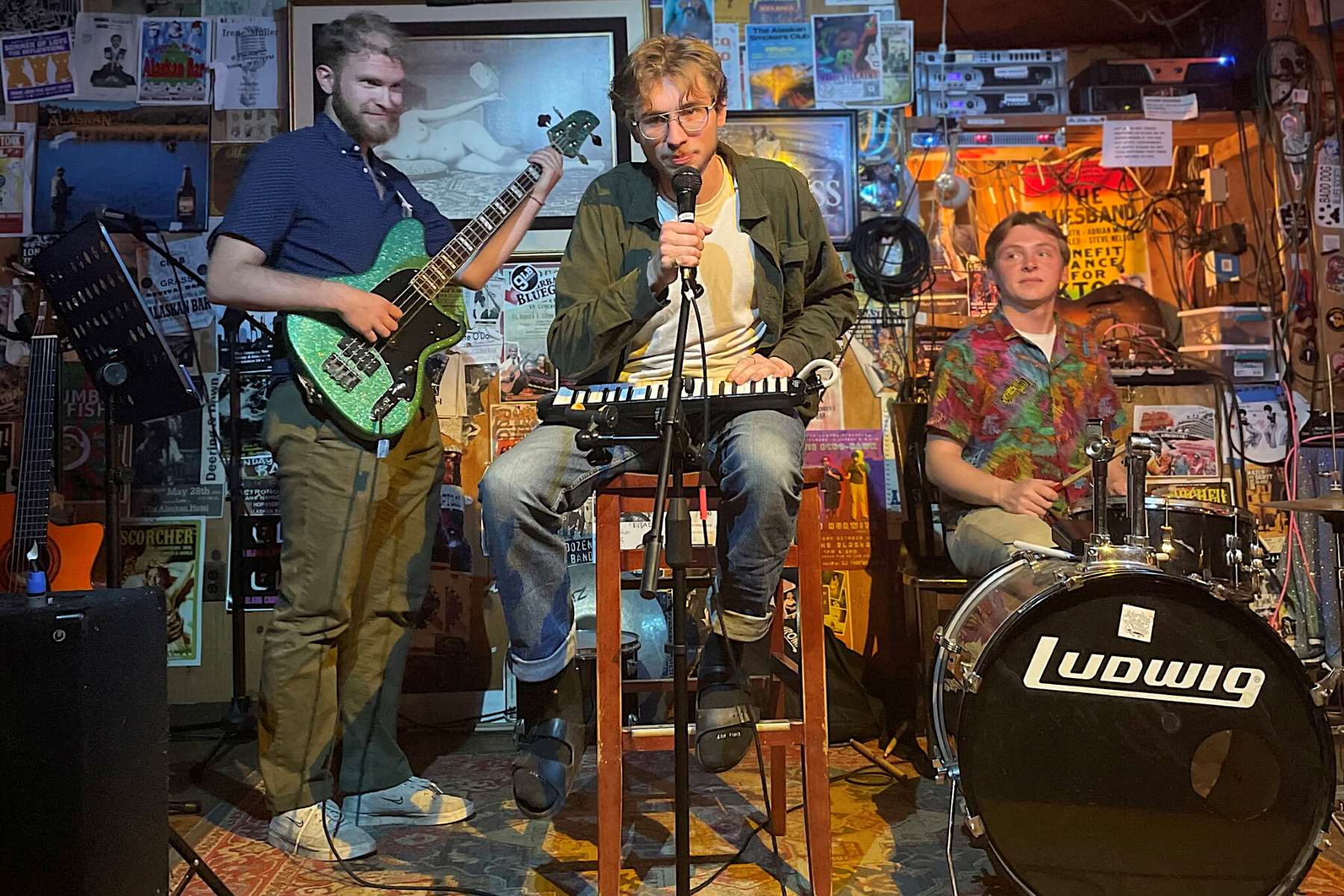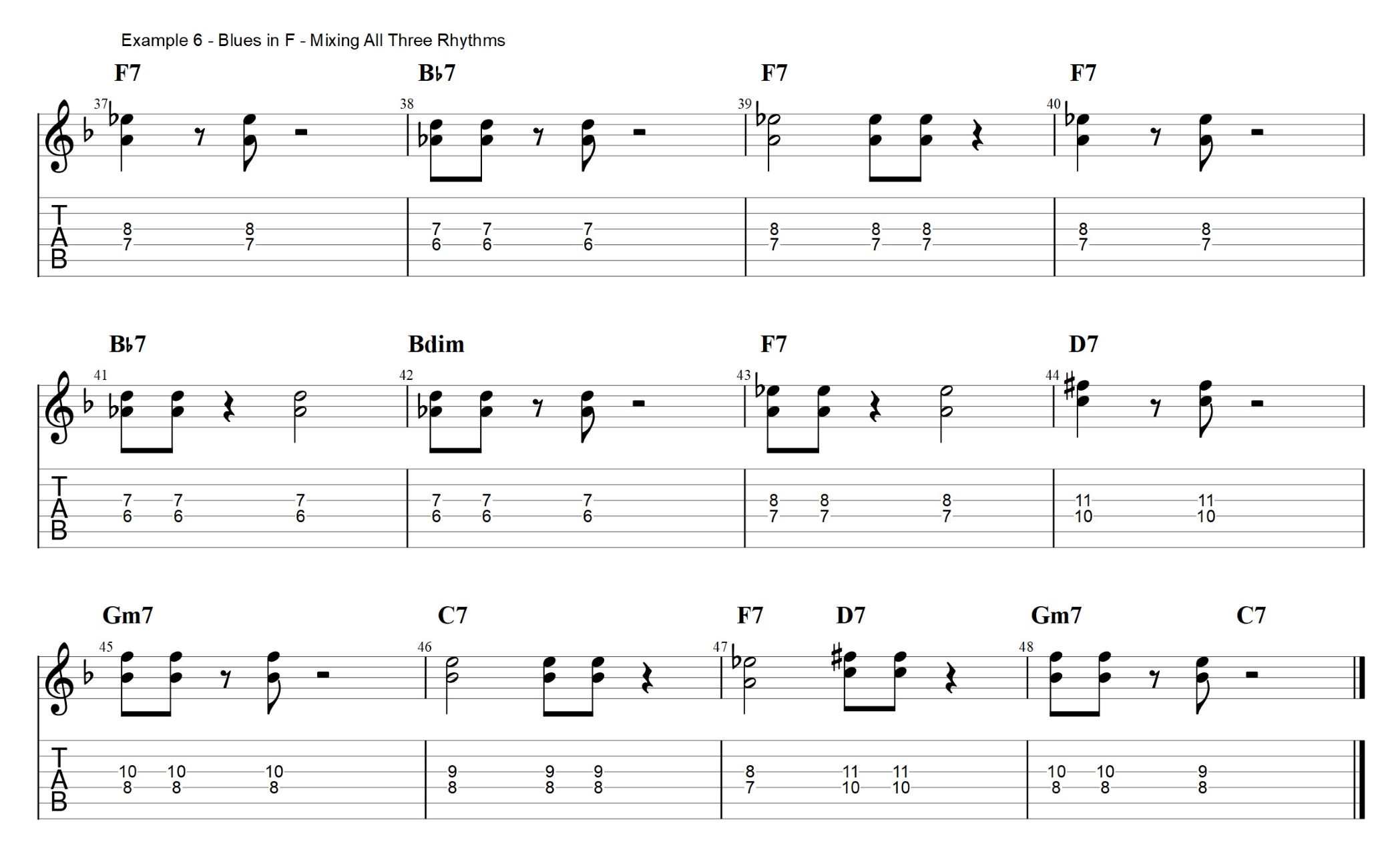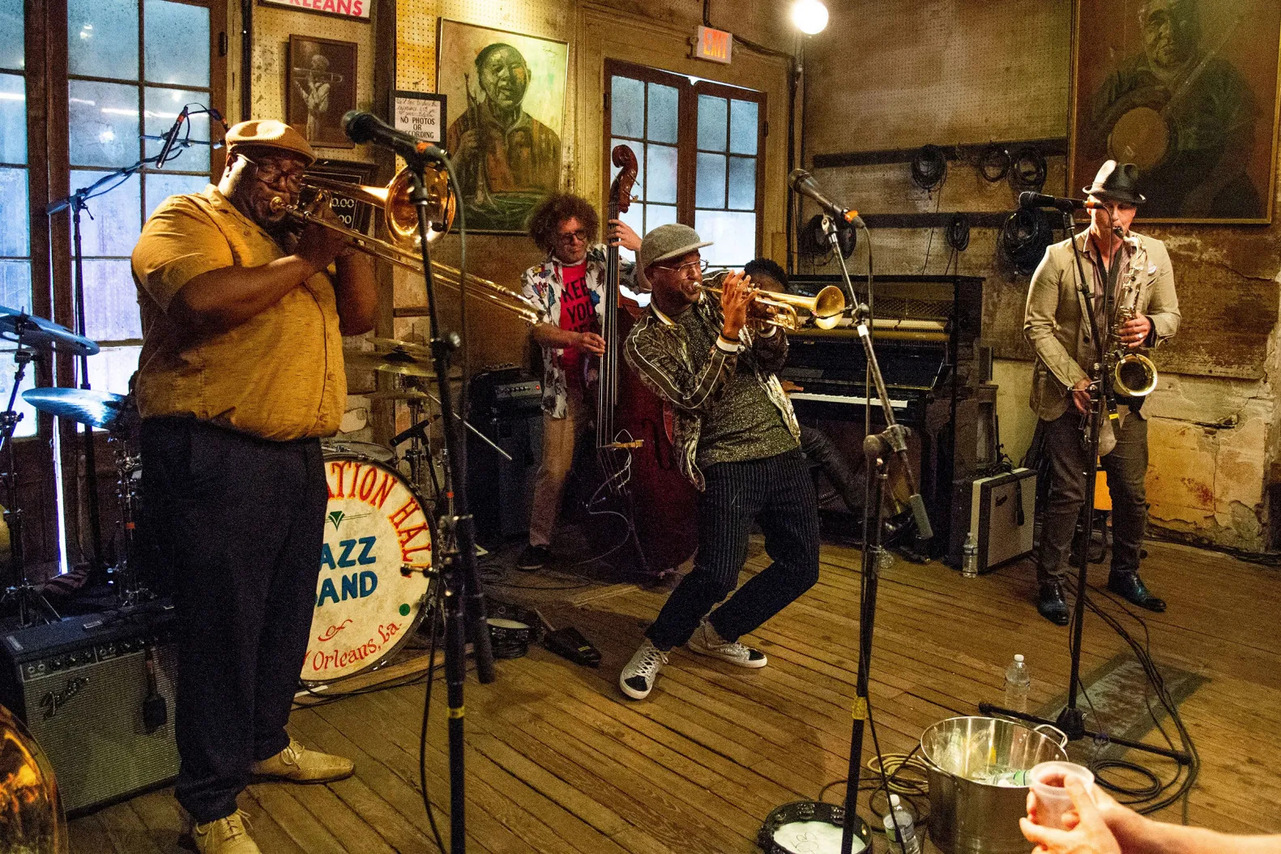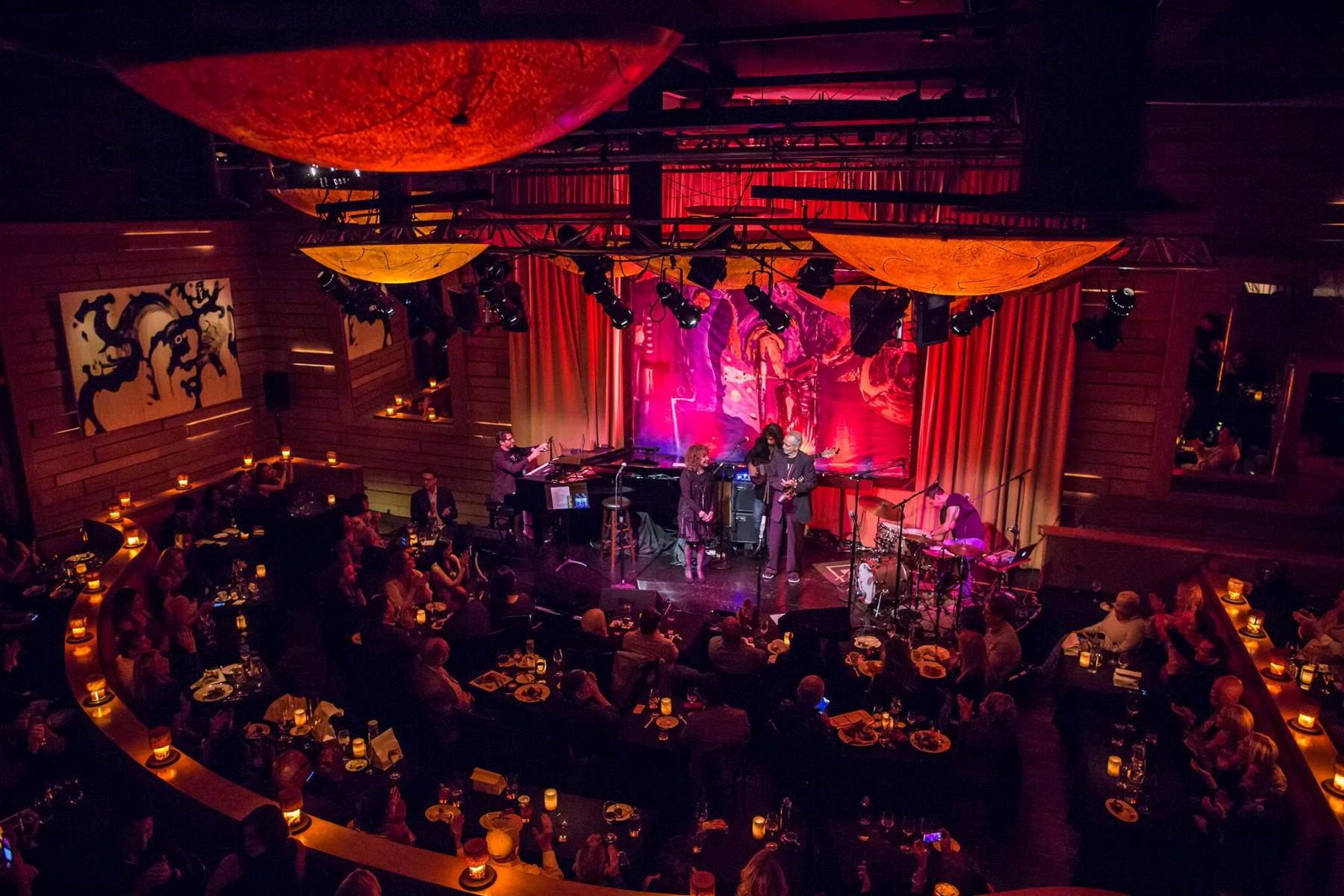

Jazz
What Is A Jazz Club
Modified: March 3, 2024
Discover the vibrant world of Jazz at a top-notch Jazz Club. Immerse yourself in soulful melodies and captivating performances. Experience the true essence of Jazz.
(Many of the links in this article redirect to a specific reviewed product. Your purchase of these products through affiliate links helps to generate commission for AudioLover.com, at no extra cost. Learn more)
Table of Contents
Introduction
Welcome to the vibrant world of jazz clubs! These unique establishments have played a crucial role in the development and preservation of jazz music for decades. From the lively streets of New Orleans to the bustling clubs of New York City, jazz clubs have been the heartbeat of this genre, serving as gathering places for musicians, enthusiasts, and artists from all walks of life.
Jazz clubs are more than just venues for live performances; they are cultural hubs that celebrate the improvisation, creativity, and soulful expression that define jazz. These intimate spaces provide a platform for musicians to connect with their audience in a way that is unparalleled in other music genres. With their dimly lit interiors, cozy seating arrangements, and the unmistakable sound of swinging rhythms and melodic solos, jazz clubs exude a certain charm and allure that transport you to another time and place.
Whether you’re a lifelong jazz aficionado or new to the genre, stepping into a jazz club is like entering a sanctuary of musical expression. The atmosphere is electric, with anticipation hanging in the air as people gather to witness the magic unfold on stage. Each performance is a unique experience, as the musicians feed off the energy of the crowd, creating an interactive and immersive concert setting.
From the moment you cross the threshold into a jazz club, you are transported into a world that embraces artistic freedom, spontaneity, and the sheer joy of creating and sharing music. It’s not just about the notes played; it’s about the intangible connection between musicians and the audience, where time seems to stand still and the worries of the outside world melt away.
In this article, we will explore the multifaceted world of jazz clubs, diving into their history, significance, unique features, and their pivotal role in the jazz music scene. We will also take a closer look at some of the most renowned jazz clubs around the world, as well as the challenges they face in an ever-evolving music industry. So, grab a seat at the bar, order your favorite drink, and let’s embark on a journey through the mesmerizing world of jazz clubs!
Definition of a Jazz Club
A jazz club can be defined as a venue specifically dedicated to hosting live jazz music performances. It is a space where musicians and enthusiasts come together to celebrate and engage with the genre. While the exact ambiance and layout may differ from club to club, there are certain characteristics that define a jazz club.
First and foremost, a jazz club is known for its intimate setting. Unlike larger concert halls or stadiums, jazz clubs tend to have a smaller capacity, allowing for a more personal and immersive experience. This closeness between the audience and performers creates a unique energy and connection that is often cherished in the jazz community.
Another defining feature of a jazz club is its focus on live music. While some clubs may have occasional DJ nights or recorded music playing during breaks, the main attraction is always the live jazz performance. Musicians come together on stage, showcasing their improvisational skills, interacting with each other, and captivating the audience with their talent and passion.
The décor and ambiance of a jazz club also contribute to its identity. Many jazz clubs have a cozy and dimly lit atmosphere, evoking a sense of intimacy and nostalgia. The interior design often reflects the rich history of jazz, with vintage photographs, artwork, and memorabilia adorning the walls.
Furthermore, a jazz club usually has a well-stocked bar, offering a variety of beverages, including classic cocktails commonly associated with the genre, such as the martini or the old fashioned. The availability of drinks adds to the overall experience, as patrons can enjoy their favorite libations while immersing themselves in the music.
Jazz clubs are not solely performance venues; they also serve as gathering places for the jazz community. Musicians, fans, and industry professionals mingle, exchange ideas, network, and foster a sense of camaraderie. For aspiring jazz musicians, these clubs often become a hub for learning and growth, as they provide opportunities to jam with seasoned players and learn from their expertise.
To summarize, a jazz club can be defined as an intimate venue dedicated to live jazz music performances. It is a place where musicians and jazz enthusiasts come together to celebrate the genre, experience captivating live performances, and connect with like-minded individuals who share a love for this timeless music.
History of Jazz Clubs
The history of jazz clubs is intertwined with the origins and evolution of jazz music itself. The roots of jazz can be traced back to the early 20th century, originating in African American communities in New Orleans, Louisiana. As this distinct musical genre began to gain popularity, so did the need for dedicated spaces where jazz musicians could perform and flourish.
During the early years of jazz, the music was primarily played in informal settings, such as brothels, speakeasies, and dance halls. These venues provided a platform for musicians, many of whom were African American, to express themselves freely and develop the unique sound of jazz. However, it was not until the 1910s and 1920s that dedicated jazz clubs started to emerge.
One of the earliest and most influential jazz clubs was The Original Dixieland Jazz Band, established in 1917 in Chicago. It was here that Dixieland jazz, a popular style of jazz at the time, gained widespread recognition and paved the way for the jazz club culture to thrive across the United States.
As the popularity of jazz grew, so did the number of jazz clubs, particularly in urban centers like New Orleans, New York City, and Chicago. These clubs became cultural hotspots and focal points for the jazz community. Places like New York City’s Cotton Club, opened in 1923, and Chicago’s Green Mill Cocktail Lounge, opened in 1907, not only showcased groundbreaking jazz musicians but also became iconic landmarks in their respective cities.
The Prohibition era in the United States (1920-1933) played a significant role in shaping the history of jazz clubs. With the sale and consumption of alcohol prohibited, many jazz clubs operated as speakeasies, underground establishments where patrons could enjoy live music and illegal drinks. These speakeasies became havens for the vibrant jazz scene, fostering the growth and innovation of the genre.
Throughout the 20th century, jazz clubs continued to serve as platforms for both established and up-and-coming musicians to showcase their talents. Legendary venues like Birdland in New York City, opened in 1949, and The Jazz Showcase in Chicago, opened in 1947, hosted some of the most iconic jazz performances of all time.
As the jazz music scene expanded globally, jazz clubs became prevalent worldwide. Cities like Paris, London, Tokyo, and Berlin established their own vibrant jazz club cultures, providing platforms for local and international jazz musicians to perform and connect with audiences around the world.
Over time, jazz clubs have continued to evolve, adapting to changes in music trends and cultural shifts. While some historic venues have closed their doors, new jazz clubs have emerged, ensuring that the spirit of jazz lives on.
The history of jazz clubs showcases the resilience and enduring appeal of this genre. From its humble beginnings in New Orleans to its worldwide influence, jazz clubs have played an integral role in preserving and promoting the artistry and innovation of jazz music throughout history.
Importance of Jazz Clubs
Jazz clubs hold immense significance in the world of music, culture, and artistic expression. They serve as vital platforms for the preservation, promotion, and evolution of jazz music. Here are some key reasons why jazz clubs are important:
1. Cultural Preservation: Jazz clubs play a crucial role in preserving the rich cultural heritage of jazz music. By providing a space dedicated to jazz performances, these venues ensure that the art form continues to thrive and be celebrated by musicians, enthusiasts, and the wider community.
2. Showcasing Live Performances: Jazz club performances offer a unique and intimate experience for both musicians and audiences. The close proximity allows for a deeper connection between the artist and listener, enhancing the emotional impact of the music. This direct interaction fosters creativity, spontaneity, and the art of improvisation, all integral components of jazz music.
3. Nurturing Emerging Talent: Jazz clubs provide a nurturing ground for aspiring jazz musicians to hone their skills and gain exposure. Open jam sessions and opportunities to perform alongside seasoned professionals allow young artists to learn, collaborate, and grow within the jazz community.
4. Celebrating Musical Diversity: Jazz is a genre known for its diversity and adaptability. Jazz clubs act as inclusive spaces that embrace different styles and subgenres, from traditional jazz to bebop, fusion, and avant-garde. This diversity of musical expressions helps expand the boundaries of jazz and keeps the genre dynamic and relevant.
5. Community Gathering Places: Jazz clubs serve as vital hubs for the jazz community to come together. Musicians, fans, industry professionals, and enthusiasts can connect, share ideas, and forge relationships that further nurture the growth and development of the genre. These venues create a sense of belonging and unity among like-minded individuals.
6. Cultural Education: Jazz clubs often host educational events and workshops, offering opportunities for people of all ages to learn about the history, theory, and techniques of jazz music. These initiatives help educate the public about the cultural significance and impact of jazz, ensuring its preservation for future generations.
7. Tourism and Economic Impact: Jazz clubs attract tourists and contribute to the local economy by generating revenue through ticket sales, food and beverage sales, and merchandise. They become cultural landmarks within their communities, drawing visitors from near and far, thereby stimulating the local economy.
In summary, jazz clubs are essential cultural institutions that promote, preserve, and advance the artistry of jazz music. They create a space for performers and enthusiasts to connect, celebrate, and contribute to the rich legacy of this influential genre. Without jazz clubs, the vibrant jazz community would not have a dedicated platform to thrive and flourish.
Features of a Jazz Club
Jazz clubs possess distinct features that contribute to their unique atmosphere and essence. These elements are integral in creating an authentic and immersive experience for both musicians and audience members. Here are some key features of a jazz club:
1. Intimate Setting: Jazz clubs are known for their cozy, intimate environments. They typically have a smaller capacity, allowing for a close proximity between the audience and the performers. This creates a sense of connection and intimacy, enhancing the overall ambiance of the club.
2. Dim Lighting: Jazz clubs often have low lighting, creating a warm and inviting atmosphere. The subdued lighting sets the mood, fostering a sense of relaxation and immersion in the music. It enhances the overall aesthetics of the space and adds to the intimate vibe.
3. Cozy Seating: The seating arrangements in jazz clubs are designed to maximize comfort and create a welcoming space for patrons. From intimate tables near the stage to plush sofas and lounge areas, the seating is carefully planned to offer a relaxed and enjoyable experience.
4. Live Music Focus: The main attraction of a jazz club is, of course, the live music. Jazz clubs prioritize hosting live performances, with talented musicians taking the stage to captivate audiences. The focus on live music ensures an engaging and interactive experience for everyone present.
5. Bar and Beverage Selection: Jazz clubs often feature a well-stocked bar, offering a variety of alcoholic and non-alcoholic beverages. Patrons can sip on classic cocktails or enjoy a wide range of drinks while immersing themselves in the music. The bar area becomes a central hub for socializing and mingling.
6. Historical Memorabilia: Many jazz clubs pay homage to the rich history and cultural significance of jazz by adorning the walls with photographs, album covers, and other memorabilia. These artifacts serve as reminders of the legendary musicians and iconic moments that have shaped the genre.
7. Jazz-Inspired Décor: The interior design of jazz clubs often reflects the essence of the music. Vintage-inspired elements, such as retro furniture, art deco accents, and warm color schemes, create an ambiance that transports patrons to a bygone era of jazz.
8. Sound System and Acoustics: Jazz clubs prioritize high-quality sound systems and optimal acoustics to ensure that the music is heard and enjoyed to its fullest potential. The sound engineers work to create a balance between the instruments and vocals, allowing for a rich and immersive sonic experience.
9. Authentic Jazz Music Selection: Jazz clubs curate their music programs with a focus on authenticity and diversity. They strive to feature both established and emerging jazz artists, showcasing a range of styles and subgenres within the jazz spectrum.
10. A Sense of Community: Jazz clubs foster a sense of community among musicians, fans, and enthusiasts. They provide a gathering place for individuals who share a love for jazz, fostering connections, and facilitating the exchange of ideas and experiences.
These features work in harmony to create a distinct and vibrant atmosphere in jazz clubs. Each element contributes to the overall experience, elevating the enjoyment of the music and cultivating a sense of togetherness within the jazz community.
Role of Jazz Clubs in the Jazz Music Scene
Jazz clubs play a pivotal role in the jazz music scene, serving as essential platforms for the development, promotion, and appreciation of the genre. They hold significant influence and contribute to the growth and sustainability of jazz in the following ways:
1. Showcasing Emerging Talent: Jazz clubs often provide opportunities for young and emerging jazz musicians to showcase their skills and gain exposure. These venues offer a nurturing environment where aspiring artists can experiment, learn from experienced musicians, and cultivate their unique artistic voices.
2. Fostering Collaboration: Jazz clubs act as catalysts for collaboration between established and up-and-coming musicians. Jam sessions and impromptu performances allow musicians to interact, exchange ideas, and push the boundaries of improvisation. The exchange of musical dialogue within the jazz club environment sparks innovation and encourages the evolution of jazz music.
3. Preserving Jazz Tradition: Jazz clubs serve as custodians of jazz tradition, preserving the history and legacy of the genre. Their commitment to featuring live performances and curating diverse lineups keeps the tradition alive and ensures that future generations have access to the roots of jazz.
4. Providing Artistic Freedom: Jazz clubs offer a space for artists to express themselves freely and explore their creativity. The improvisational nature of jazz thrives in the intimate and supportive atmosphere of these venues, allowing musicians to take risks, experiment, and transcend boundaries.
5. Engaging the Audience: Jazz clubs provide an immersive experience for audiences, enabling a deep connection with the music. The close proximity between the musicians and listeners creates an intimate environment where the emotional impact of the music is heightened. Jazz clubs encourage active participation and engagement, fostering a sense of community among jazz enthusiasts.
6. Supporting the Local Jazz Scene: Jazz clubs are often instrumental in supporting the local jazz scene, acting as incubators for talent and nurturing a vibrant jazz community. By providing regular performance opportunities, collaborations with local musicians, and workshops, clubs contribute to the growth and sustainability of the local jazz ecosystem.
7. Celebrating Jazz Diversity: Jazz clubs embrace the diverse and ever-evolving nature of jazz music. They showcase different styles and subgenres, ranging from traditional and bebop to fusion and contemporary jazz. By highlighting this diversity, clubs ensure that jazz remains relevant and accessible to a wide range of audiences.
8. International Jazz Exchange: Jazz clubs serve as platforms for international exchange and collaboration within the global jazz community. Many clubs host international jazz festivals, invite renowned artists from around the world, and facilitate cultural exchange through music, promoting a deeper understanding and appreciation of jazz on a global scale.
Jazz clubs are essential pillars of the jazz music scene, providing a nurturing environment for musicians, a space for jazz enthusiasts to immerse themselves in the music, and a hub for artistic exploration and connection. Their continued presence and role in the jazz ecosystem ensure that this vibrant genre continues to flourish and evolve for years to come.
Famous Jazz Clubs Around the World
Jazz clubs have gained legendary status thanks to their contributions to the jazz music scene and the iconic performances that have graced their stages. Here are some of the most renowned jazz clubs from around the world:
1. Blue Note (New York City, United States): Located in the heart of Greenwich Village, the Blue Note is a historic jazz club that has welcomed jazz legends such as Miles Davis, John Coltrane, and Herbie Hancock. With its intimate setting and high-caliber performances, the Blue Note remains an iconic institution in the jazz world.
2. Village Vanguard (New York City, United States): Since its opening in 1935, the Village Vanguard has been a cornerstone of the jazz scene. The club’s underground location and legendary acoustics have attracted jazz greats like Bill Evans, Thelonious Monk, and Brad Mehldau, cementing its status as a hallowed ground for jazz aficionados.
3. Snug Harbor Jazz Bistro (New Orleans, United States): Situated in the birthplace of jazz, Snug Harbor is a historic venue that has showcased local and international jazz talent for over 30 years. It continues to be a hub for traditional jazz and features performances from renowned jazz musicians year-round.
4. Half Note Jazz Club (Athens, Greece): Half Note Jazz Club is a beloved institution in the European jazz scene. Known for its diverse programming and top-notch performances, it has played host to legendary artists such as Dizzy Gillespie, Dexter Gordon, and Chick Corea.
5. Jazz Standard (New York City, United States): Jazz Standard is renowned for its commitment to presenting world-class jazz performances. Located in Manhattan, it has been a staple in the jazz community for over two decades, hosting both established musicians and rising stars.
6. Preservation Hall (New Orleans, United States): Preservation Hall is a unique jazz venue dedicated to preserving the traditional jazz of New Orleans. Since 1961, it has showcased local musicians and brought the sounds of Dixieland jazz to audiences from around the world.
7. Ronnie Scott’s Jazz Club (London, United Kingdom): Established in 1959, Ronnie Scott’s is one of the oldest and most prestigious jazz clubs in Europe. It has hosted some of the biggest names in jazz, including Ella Fitzgerald, Chet Baker, and Sonny Rollins, making it an iconic venue for jazz lovers in London.
8. Le Caveau de la Huchette (Paris, France): Le Caveau de la Huchette has been a prominent jazz club in Paris since 1949. Nestled in the Latin Quarter, it has a lively atmosphere and hosts swing and traditional jazz performances, enchanting visitors with its vintage charm.
9. Smoke Jazz & Supper Club (New York City, United States): Smoke Jazz & Supper Club is beloved for its cozy atmosphere and top-quality jazz performances. Located on the Upper West Side of Manhattan, it offers a mix of established artists and emerging musicians, providing a lively jazz experience.
10. Blue Whale Jazz Club (Los Angeles, United States): The Blue Whale has become a prominent venue in the West Coast jazz scene, attracting both local and international jazz artists. Known for its dedication to artistic expression, it has become a popular spot for the experimental and avant-garde styles of jazz.
These famous jazz clubs have left an indelible mark on the jazz landscape, hosting unforgettable performances and nurturing the growth of the genre. Each club is a testament to the enduring charm and universal appeal of jazz music.
Challenges Faced by Jazz Clubs
While jazz clubs hold immense cultural and artistic value, they also encounter various challenges that can impact their sustainability and growth. These challenges include:
1. Financial Viability: Operating a jazz club can be financially demanding. High overhead costs, such as rent, utilities, licensing fees, and artist fees, can put a strain on the club’s resources. Generating consistent revenue from ticket sales, food, and beverage sales is essential, but fluctuations in audience attendance and rising operating costs can pose challenges in maintaining financial viability.
2. Changing Audience Preferences: Jazz clubs often face the challenge of attracting and retaining a diverse and engaged audience. With changing music consumption patterns and the rise of digital platforms, traditional live music venues face competition for audience attention. Jazz clubs must continuously adapt their programming, marketing strategies, and outreach efforts to appeal to new generations of music lovers.
3. Competition from Other Genres and Entertainment Options: Jazz clubs face competition from a wide range of entertainment options, including clubs featuring other music genres, theaters, sporting events, and streaming services. This diversity of options presents a challenge in capturing the attention and attendance of potential patrons who have an array of choices for their leisure activities.
4. Noise Restrictions and Zoning Regulations: Jazz clubs often face challenges related to noise restrictions and zoning regulations imposed by local authorities. These regulations can limit the volume and duration of live music performances, inhibiting the dynamic and immersive experience that jazz clubs aim to provide. Adhering to these regulations while maintaining the essence of live jazz performance can be a delicate balance.
5. Accessibility and Location: The location and accessibility of jazz clubs can affect their visibility and patronage. Being situated in areas with limited public transportation, inadequate parking facilities, or in less prominent neighborhoods can make it challenging for potential audiences to reach the club. Jazz clubs must consider these factors when selecting a location and work to ensure accessibility for all demographics.
6. Rising Costs of Talent: Booking renowned jazz musicians often requires a significant investment for jazz clubs. As the demand for established artists continues to rise, their fees can be a financial burden for smaller clubs with limited budgets. Balancing the desire to feature established performers with the need to support emerging talent can pose challenges in managing programming costs.
7. Changing Cultural Landscape: The cultural landscape is ever-evolving, and jazz clubs must navigate changing trends and societal shifts. Jazz clubs need to stay relevant and reflect the diverse cultural interests of their communities. They must adapt their programming to appeal to a wider audience while at the same time preserving the integrity and authenticity of the jazz genre.
Despite these challenges, the continued passion and dedication of the jazz community and jazz club owners have allowed many venues to thrive. By embracing innovation, community engagement, and strategic planning, jazz clubs can overcome these obstacles and continue to be vibrant centers of live jazz music and cultural exchange.
Future of Jazz Clubs
The future of jazz clubs holds both challenges and opportunities as the music industry continues to evolve. While jazz clubs face hurdles in staying relevant and financially sustainable, there are several trends and strategies that can shape their future:
1. Diversifying Programming: Jazz clubs can expand their programming to incorporate a broader range of musical styles and genres while maintaining a strong focus on jazz. By featuring diverse lineups, clubs can attract a wider audience and create a space for unique musical experiences that blend jazz with other genres and experimental approaches.
2. Embracing Technology: Jazz clubs can leverage technology to enhance audience engagement and reach new listeners. Live streaming concerts, creating online communities, and utilizing social media platforms can help jazz clubs connect with global audiences and expand their reach beyond physical boundaries.
3. Community Collaboration: Jazz clubs can foster collaborations with local community organizations, educational institutions, and other music venues. By engaging in partnerships, clubs can promote jazz education, create mentorship programs, and collaborate on events that celebrate the vibrant jazz scene in their region.
4. Emphasizing Music Education: Jazz clubs can play an active role in music education by hosting workshops, masterclasses, and educational events. By nurturing young musicians and promoting jazz education, clubs contribute to the development of future jazz artists and ensure the longevity of the genre.
5. Cultivating New Audiences: Jazz clubs can focus on engaging younger audiences by creating a welcoming and inclusive atmosphere. Offering discounted tickets, hosting youth-focused events, and embracing emerging trends in jazz can help attract a new generation of jazz enthusiasts.
6. Exploring Hybrid Models: Jazz clubs can explore hybrid models that combine live performances with other revenue streams. Incorporating dining experiences, cocktail bars, and merchandise sales can provide additional sources of income and enhance the overall club experience while maintaining a focus on live jazz music.
7. Preserving Jazz History: As guardians of jazz history, clubs can continue to honor and celebrate the legacy of jazz through curated events, exhibitions, and partnerships with jazz archives and museums. By preserving and showcasing jazz artifacts, clubs can educate audiences and foster an appreciation for the historical significance of the genre.
8. Environmental Sustainability: Jazz clubs can prioritize sustainability by implementing eco-friendly practices. This can involve using renewable energy, reducing waste, and promoting environmentally conscious initiatives. By taking these steps, clubs can align with societal values and attract environmentally conscious patrons.
While the future of jazz clubs may present challenges, their continued relevance is crucial for the preservation and advancement of jazz music. By embracing innovation, community engagement, and adaptability, jazz clubs have the potential to thrive and continue to be vital cultural institutions that foster artistic expression, nurture emerging talent, and provide enriching experiences for generations to come.
Conclusion
Jazz clubs hold a special place in the heart of the jazz music scene. These intimate venues have been instrumental in shaping the history, development, and preservation of jazz music since its inception. From the smoky clubs of New Orleans to the vibrant scenes of New York City, jazz clubs have served as gathering places for musicians, enthusiasts, and artists, creating a space for the magic of jazz to come alive.
Throughout this article, we have delved into the world of jazz clubs, exploring their definition, history, features, and significance. We have discovered the role they play in showcasing emerging talent, fostering collaboration, and preserving jazz traditions. We have uncovered the challenges they face, from financial viability to changing audience preferences, and identified strategies for their future success.
Despite the challenges, the future of jazz clubs holds great promise. By diversifying programming, embracing technology, and cultivating collaborations within the community, jazz clubs can continue to thrive and adapt to the ever-changing music landscape. By engaging new audiences, prioritizing music education, and preserving jazz history, these venues can ensure that jazz remains a vibrant and relevant art form, captivating audiences for generations to come.
As we journeyed through the famous jazz clubs around the world, we witnessed the tremendous impact and influence these venues have had on the jazz music scene. From iconic establishments like the Blue Note in New York City to cultural landmarks like Preservation Hall in New Orleans, each club has left an indelible mark on the history of jazz, hosting legendary performances and captivating audiences with the magic of live jazz music.
In conclusion, jazz clubs are essential cultural institutions that celebrate the rich legacy of jazz music. They provide a haven for musicians to express their creativity, a gathering place for enthusiasts to connect, and a sanctuary for audiences to immerse themselves in the magic of live jazz performances. While jazz clubs face challenges in an ever-changing music industry, their continued dedication, adaptability, and commitment to the art form ensure that jazz remains a vibrant and cherished genre with a bright future ahead.

